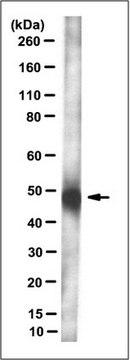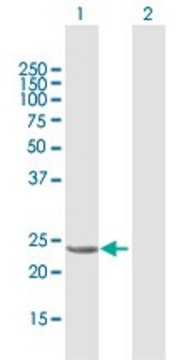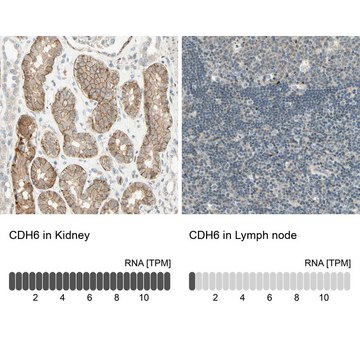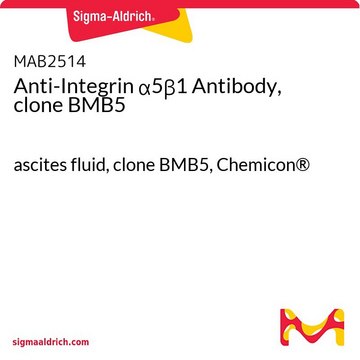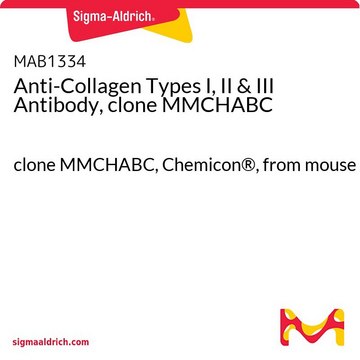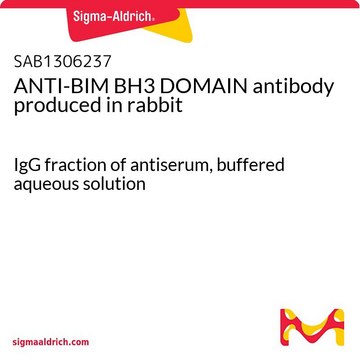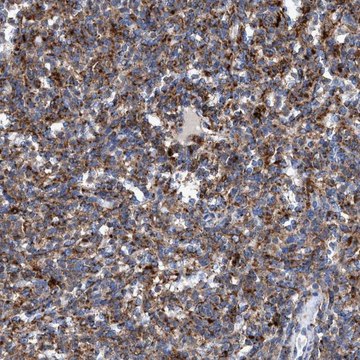推荐产品
生物来源
mouse
质量水平
偶联物
unconjugated
抗体形式
purified immunoglobulin
抗体产品类型
primary antibodies
克隆
3D4, monoclonal
表单
buffered aqueous solution
分子量
antigen ~37.11 kDa
种属反应性
human
技术
immunofluorescence: suitable
indirect ELISA: suitable
western blot: 1-5 μg/mL
同位素/亚型
IgG1κ
NCBI登记号
UniProt登记号
运输
dry ice
储存温度
−20°C
靶向翻译后修饰
unmodified
基因信息
human ... GSTA2(2939)
一般描述
Cytosolic and membrane-bound forms of glutathione S-transferase are encoded by two distinct supergene families. These enzymes function in the detoxification of electrophilic compounds, including carcinogens, therapeutic drugs, environmental toxins and products of oxidative stress, by conjugation with glutathione. The genes encoding these enzymes are known to be highly polymorphic. These genetic variations can change an individual′s susceptibility to carcinogens and toxins as well as affect the toxicity and efficacy of some drugs. At present, eight distinct classes of the soluble cytoplasmic mammalian glutathione S-transferases have been identified: alpha, kappa, mu, omega, pi, sigma, theta and zeta. This gene encodes a glutathione S-tranferase belonging to the alpha class. The alpha class genes, located in a cluster mapped to chromosome 6, are the most abundantly expressed glutathione S-transferases in liver. In addition to metabolizing bilirubin and certain anti-cancer drugs in the liver, the alpha class of these enzymes exhibit glutathione peroxidase activity thereby protecting the cells from reactive oxygen species and the products of peroxidation. (provided by RefSeq)
免疫原
GSTA2 (AAH02895, 1 a.a. ~ 100 a.a) partial recombinant protein with GST tag. MW of the GST tag alone is 26 KDa.
Sequence
MAEKPKLHYSNIRGRMESIRWLLAAAGVEFEEKFIKSAEDLDKLRNDGYLMFQQVPMVEIDGMKLVQTRAILNYIASKYNLYGKDIKEKALIDMYIEGIA
Sequence
MAEKPKLHYSNIRGRMESIRWLLAAAGVEFEEKFIKSAEDLDKLRNDGYLMFQQVPMVEIDGMKLVQTRAILNYIASKYNLYGKDIKEKALIDMYIEGIA
外形
Solution in phosphate buffered saline, pH 7.4
未找到合适的产品?
试试我们的产品选型工具.
储存分类代码
10 - Combustible liquids
WGK
WGK 1
闪点(°F)
Not applicable
闪点(°C)
Not applicable
法规信息
新产品
Guoyun Bi et al.
Cell reports methods, 4(5), 100778-100778 (2024-05-16)
Alcohol-associated liver disease (ALD) is a prevalent liver disease, yet research is hampered by the lack of suitable and reliable human ALD models. Herein, we generated human adipose stromal/stem cell (hASC)-derived hepatocellular organoids (hAHOs) and hASC-derived liver organoids (hALOs) in
我们的科学家团队拥有各种研究领域经验,包括生命科学、材料科学、化学合成、色谱、分析及许多其他领域.
联系技术服务部门